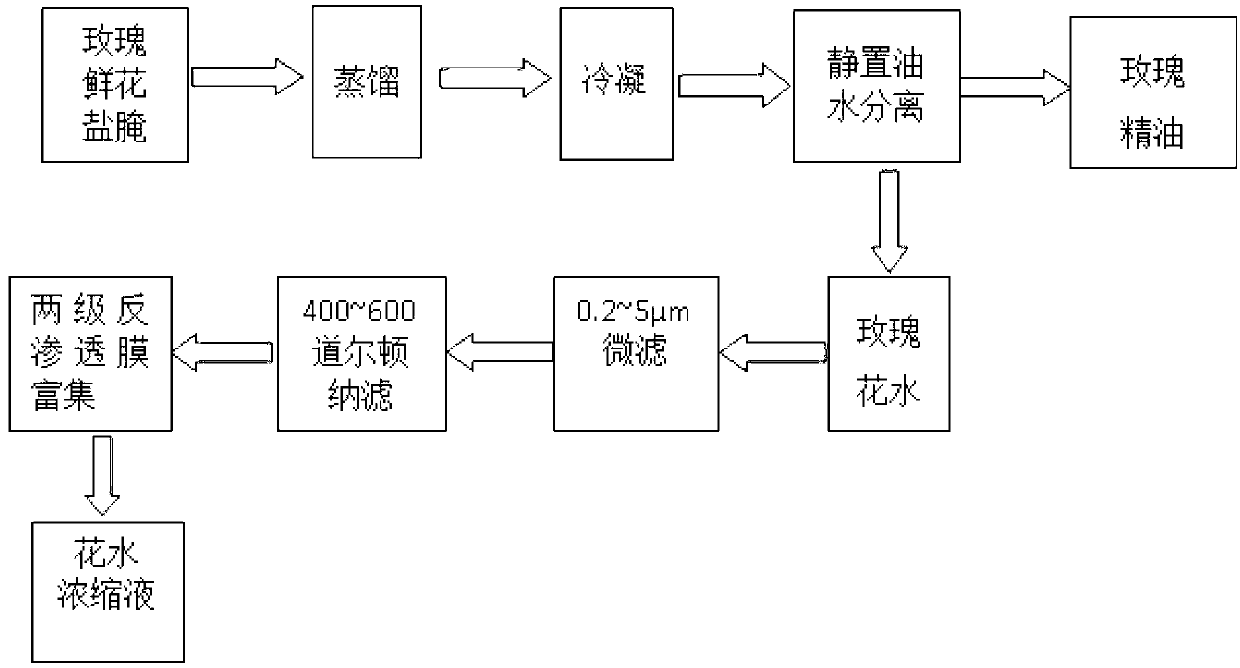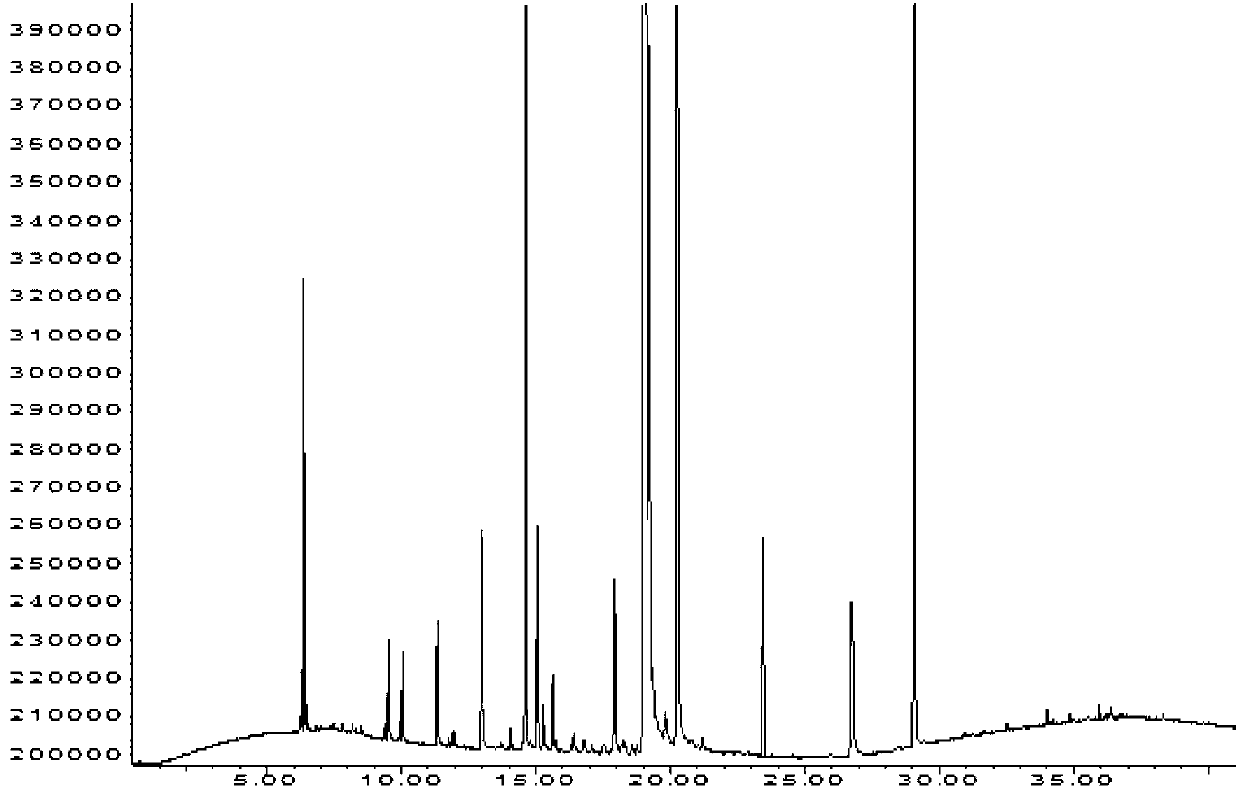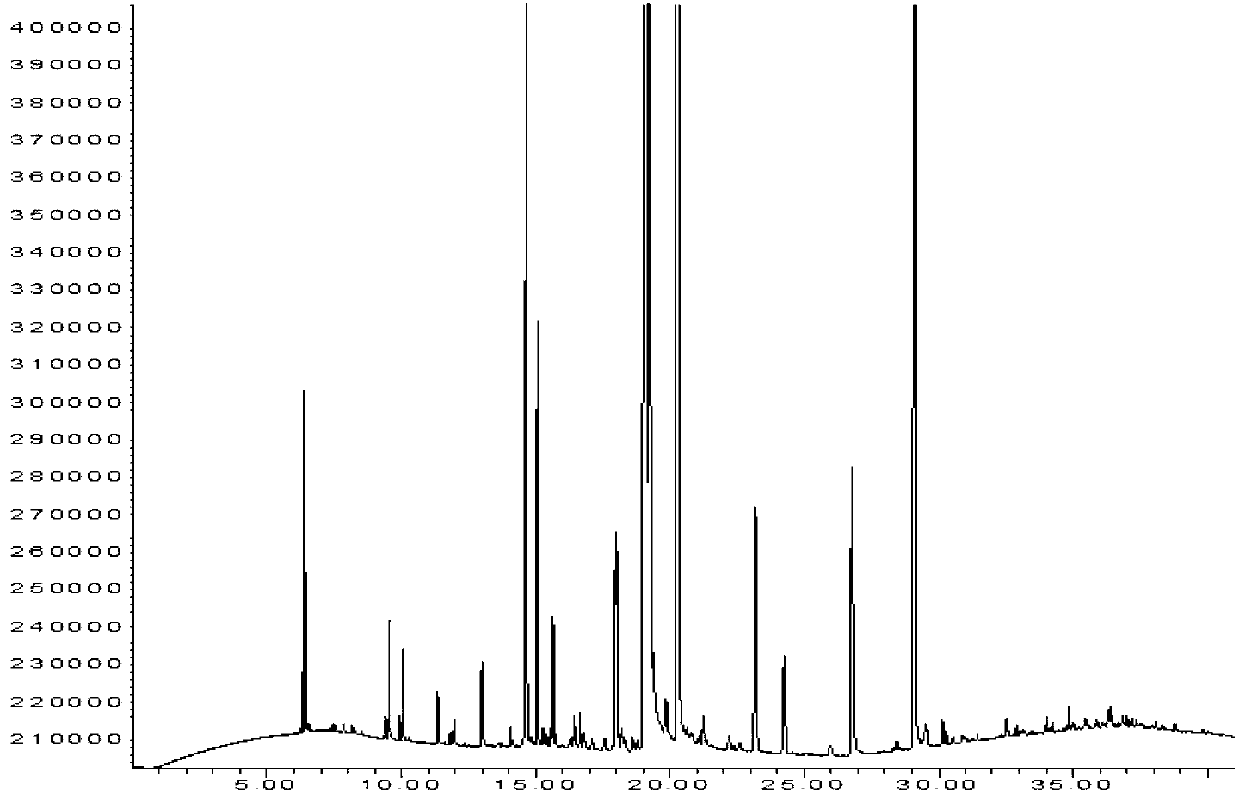Rose water concentrated liquor processing method
The technology of a rose water and a processing method is applied in the directions of pharmaceutical formulations, cosmetics, preparations for skin care, etc., which can solve the problems of inconvenient transportation and high packaging costs, and achieve the effects of solving difficult storage, less loss of aroma components, and low energy consumption.
- Summary
- Abstract
- Description
- Claims
- Application Information
AI Technical Summary
Problems solved by technology
Method used
Image
Examples
Embodiment 1
[0031] according to figure 1 The flow chart of the production process of rose water concentrate is shown. After fresh roses are picked, add 13% salt of fresh flowers and marinate them for 20 days. After mixing with demineralized water at a material-to-liquid mass ratio of 1:2.5, add them to a distillation tank for distillation for 4 h. After the distillate is condensed by the condenser, it enters the oil-water separator to stand still, and the rose water is obtained after the essential oil is separated. Take 50 L of rose water stock solution at room temperature, pass through a microfiltration membrane with a pore size of 0.5 μm to remove suspended particles and bacteria to obtain a microfiltration permeate, and use a nanofiltration filter with a molecular cutoff of 400 Daltons to obtain the microfiltration permeate. The filter membrane is filtered to obtain the nanofiltration permeate, and then the nanofiltration permeate is intercepted by the first-stage reverse osmosis membr...
Embodiment 2
[0033] according to figure 1 The flow chart of the production process of the rose water concentrate is shown. After the fresh roses are picked, add 15% of the flower mass salt to marinate for 30 days, mix it with demineralized water at a material-to-liquid mass ratio of 1:3, and then add it to the distillation tank for distillation for 3 h. After the distillate is condensed by the condenser, it enters the oil-water separator to stand still, and the rose water is obtained after the essential oil is separated. Take 50 L of rose flower water at room temperature, pass through a microfiltration membrane with a pore size of 1 μm to remove suspended particles and bacteria to obtain a permeate, and filter the permeate through a nanofiltration membrane with a molecular cutoff of 500 Daltons to obtain a nanofiltration membrane. Filtrate the permeate, and then pass the nanofiltration permeate through the primary reverse osmosis membrane under the operating pressure of 1~2 MPa. Under the...
Embodiment 3
[0036]After fresh roses are picked, add salt with 17% of the mass of flowers and marinate them for 50 days, mix them with demineralized water at a ratio of 1:4 to liquid, add them to a distillation tank for distillation for 2.5 hours, and the distillate is condensed by a condenser and then enters an oil-water separator for standing , rose water is obtained after the essential oil is separated. Take 50 L of rose water at room temperature, pass through a microfiltration membrane with a pore size of 2 μm to remove suspended particles and bacteria to obtain the permeate, and filter the permeate through a nanofiltration membrane with a molecular cutoff of 600 Daltons to obtain nano Filtrate the permeate, and then pass the nanofiltration permeate through the interception of the primary reverse osmosis membrane under the operating pressure of 1~2 MPa. Under the operating pressure of 4 MPa, it is input into the secondary reverse osmosis system for circulation, and the intercepted liqu...
PUM
| Property | Measurement | Unit |
|---|---|---|
| Aperture | aaaaa | aaaaa |
| Mwco | aaaaa | aaaaa |
Abstract
Description
Claims
Application Information
 Login to View More
Login to View More - R&D
- Intellectual Property
- Life Sciences
- Materials
- Tech Scout
- Unparalleled Data Quality
- Higher Quality Content
- 60% Fewer Hallucinations
Browse by: Latest US Patents, China's latest patents, Technical Efficacy Thesaurus, Application Domain, Technology Topic, Popular Technical Reports.
© 2025 PatSnap. All rights reserved.Legal|Privacy policy|Modern Slavery Act Transparency Statement|Sitemap|About US| Contact US: help@patsnap.com



